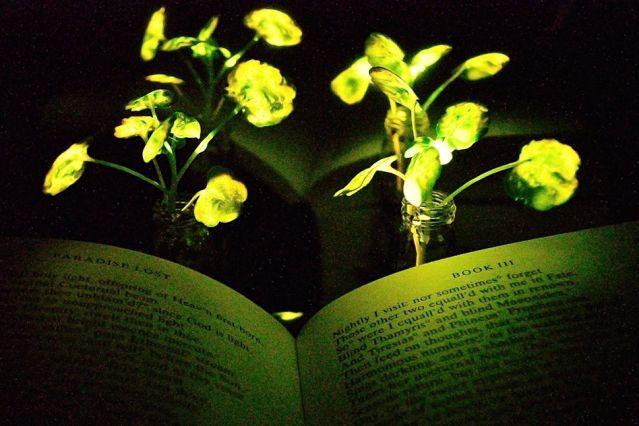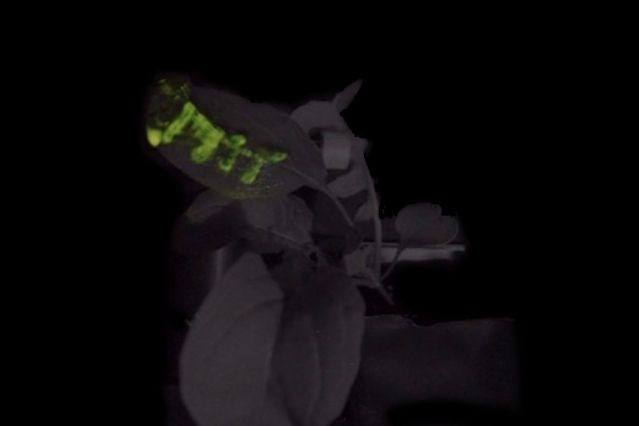MIT Scientists Create Glow In The Dark Plants That Could Replace Streetlights

The energy needs of human beings are growing by the second. Even though we have realized over-exploitation of every natural resource available, over a century, has done more harm than good, we continue to rely heavily on environmentally unfriendly power sources. In a bid to put the brakes on our energy consumption, scientists worldwide are constantly working on novel ways to power our electricity-driven lives.
Recently, a team of scientists from Massachusetts Institute of Technology (MIT), developed a table light that needs no electricity to function. By making plants glow, they created literally the greenest light source ever.
The team used specialized nanoparticles, which were embedded into the leaves of a watercress plant off dim light for nearly four hours. The team believe this is the first step in creating more efficient and powerful luminescent plants that could reduce the energy we use on lighting, which is estimated at 20 percent of the total power consumption.
“The vision is to make a plant that will function as a desk lamp — a lamp that you don’t have to plug in. The light is ultimately powered by the energy metabolism of the plant itself,” said Michael Strano, the Carbon P. Dubbs Professor of Chemical Engineering at MIT and the senior author of the study in a MIT News press release.
The team used enzyme called luciferase, which is the same substance that gives fireflies their amazing flashing behinds at night.
They also used two other components called luciferin and coenzyme A. Luciferin reacted with luciferase, causing it to emit light, while coenzyme A inhibited luciferase activity which promoted the process. They were delivered to specific locations of the leaf using nanoparticle carriers.
The particles helped regulate the reaction between the two, giving the plant a steady glow. The process was tweaked to achieve the four-hour glow mark. Even though the glow is rather dim, the team feels that they can work on that.

The nanoparticles are all made of materials the Food and Drug Administration classified as “generally regarded as safe,” and help each component get to the right part of the plant. They also prevent the components from reaching concentrations that could be toxic to the plants, said the release.
The team believed with further study and development, they may reach a point where the materials can be applied to a plant just once while yielding a lifetime of useful lighting.
“Our target is to perform one treatment when the plant is a seedling or a mature plant, and have it last for the lifetime of the plant,” Michael Strano, senior author of the research, explained. “Our work very seriously opens up the doorway to streetlamps that are nothing but treated trees, and to indirect lighting around homes.”
The glow could also be turned off by training the plants to stop the reaction between the particles using a luciferase inhibitor. The team hopes the plants could one day turn the glow ‘ off’ when they sense sunlight, which is an inherent quality in plants. This way the lights could become effective additions to night lights across the globe, reducing our dependence on depletable and polluting sources of energy.
© Copyright IBTimes 2024. All rights reserved.





















